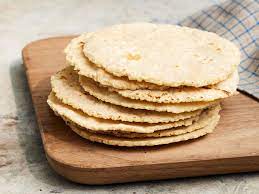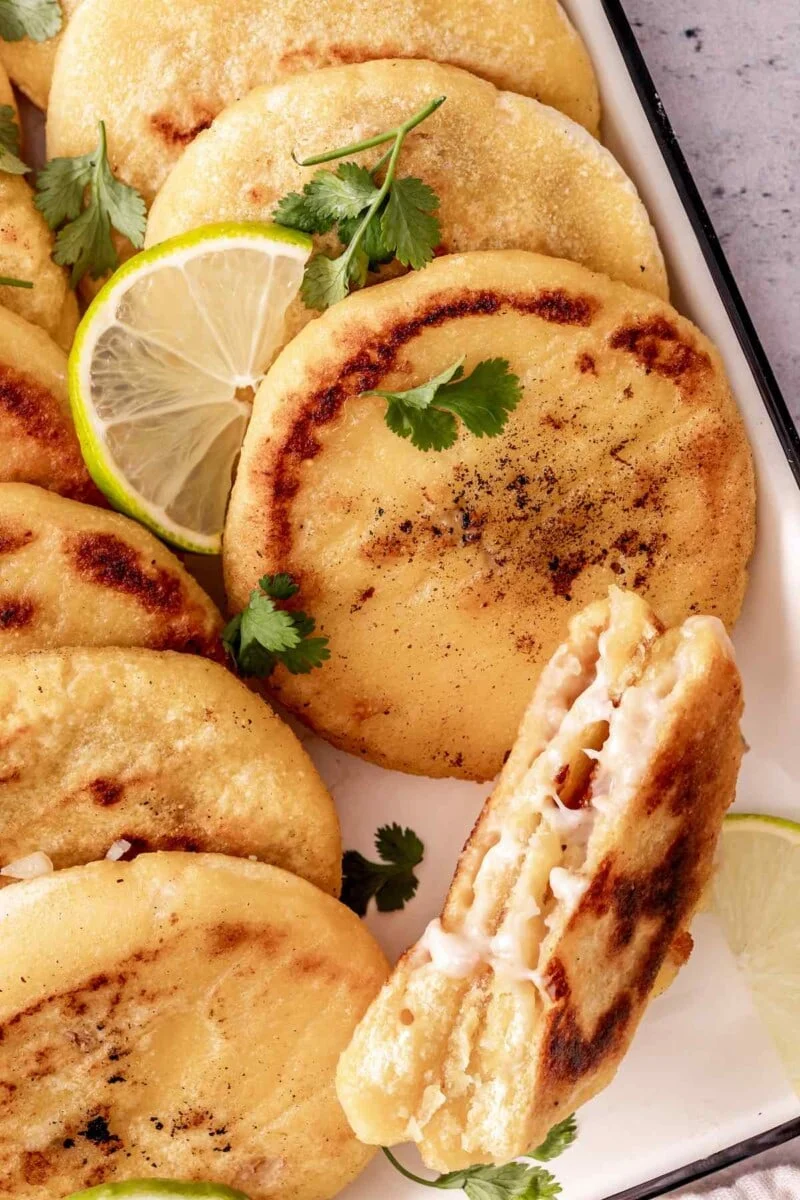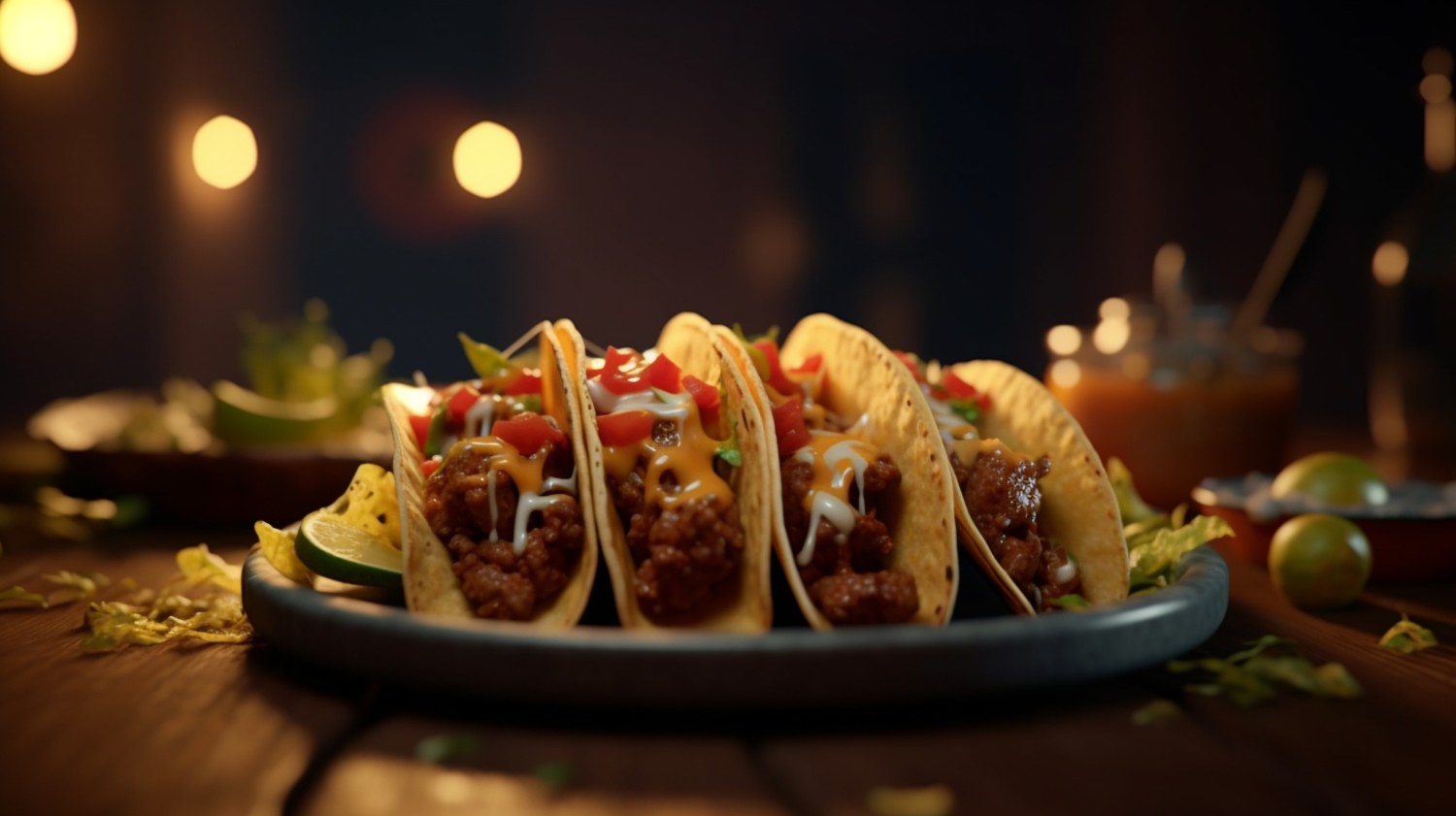Is Mexican food high in sodium? Mexican cuisine, known for its vibrant flavors and rich spices, can sometimes be high in sodium, depending on the ingredients and preparation methods used.
Traditional dishes often incorporate salt, seasoned meats, cheeses, and sauces that can contribute to a high sodium content.
Additionally, processed ingredients like canned beans or store-bought tortillas may also have elevated sodium levels.
However, with mindful choices and cooking techniques, it is possible to enjoy Mexican food while managing sodium intake.
Understanding which ingredients contribute to sodium levels can help you make healthier decisions when indulging in this flavorful cuisine.
Here’s what the difference between sopes and tostadas?
Is mexican food high in sodium?
Mexican food can be high in sodium, depending on the ingredients and preparation methods used.
Traditional dishes like tacos, enchiladas, and burritos often include components such as cheese, refried beans, salsas, and processed meats (e.g., chorizo), which are typically high in sodium.
Additionally, restaurant-prepared Mexican food or pre-packaged options may contain added salt and preservatives to enhance flavor and extend shelf life, contributing to higher sodium content.
However, it’s possible to enjoy lower-sodium Mexican food by making mindful choices.
Opting for fresh ingredients, such as grilled chicken, fish, or vegetables, and preparing homemade salsas and guacamole can help reduce sodium intake.
Limiting the use of cheese, salty condiments, and processed meats, and choosing whole, unprocessed foods like beans, avocados, and fresh produce will also help keep sodium levels in check while still enjoying the vibrant flavors of Mexican cuisine.
Is Mexican food the most unhealthy food you can eat?
Labeling Mexican food as the “most unhealthy” is a misconception, as its nutritional value largely depends on the ingredients and preparation methods used.

Traditional Mexican cuisine is rooted in wholesome, nutrient-rich foods like beans, vegetables, lean proteins, and whole grains, making it possible to enjoy balanced, healthy meals.
However, some Americanized versions of Mexican dishes can be less healthy due to the addition of excessive cheese, sour cream, fried tortillas, and processed meats, leading to higher calorie, fat, and sodium content.
Fast-food Mexican chains often serve dishes that are calorie-dense and nutrient-poor.
Here, difference between tostadas and huaraches?
That said, Mexican food can be made healthy by choosing dishes that emphasize fresh, whole ingredients, like grilled meats, beans, and vegetables, and by moderating portions of high-calorie extras like cheese and sour cream.
Comparing it to other cuisines, Mexican food is not inherently unhealthy and can be part of a balanced diet.
Is mexican food high in sodium?
Mexican food can be high in sodium, especially when it includes ingredients like processed meats (chorizo, bacon), cheese, canned beans, and commercial salsas.
Restaurant and fast-food versions of Mexican dishes often use additional salt and high-sodium seasonings to enhance flavor, contributing to a higher sodium content.
Dishes like tacos, enchiladas, and burritos can be particularly high in sodium due to these ingredients.
However, Mexican food can also be made with fresh, low-sodium ingredients, offering a healthier option.
Preparing dishes at home using fresh vegetables, lean meats, and homemade salsas allows for better control over sodium levels.
Opting for grilled or steamed dishes, and using herbs and spices instead of salt, can significantly reduce sodium intake. While some Mexican foods can be high in sodium, mindful preparation and ingredient choices can make it a healthier option.
Does Mexican food have a lot of sodium?
Mexican food can contain a lot of sodium, especially when dishes include ingredients like processed meats, cheese, canned beans, and commercial sauces.
Restaurant and fast-food Mexican meals often have added salt and sodium-rich seasonings to enhance flavor, leading to higher sodium content.
Here, what food is similar to huaraches?
Common dishes like tacos, burritos, and enchiladas can be particularly high in sodium due to these ingredients.
However, the sodium content in Mexican food varies widely depending on how it’s prepared.

Homemade Mexican dishes made with fresh ingredients, such as lean meats, vegetables, and homemade salsas, can be much lower in sodium.
By opting for grilled instead of fried items, using herbs and spices instead of salt, and avoiding processed ingredients, you can enjoy flavorful Mexican food without excessive sodium.
So, while Mexican food can have a lot of sodium, it doesn’t have to if prepared with care.
List of 50 mexican food you should have with low sodium
7 Reason why mexican food high in sodium?
Misconception: Is it a misconception that mexican food high in sodium?
Yes, it is a misconception that Mexican food is inherently high in sodium.
While some versions of Mexican cuisine, particularly those served in restaurants or fast-food chains, can be high in sodium due to the use of processed ingredients, commercial sauces, and large portion sizes, traditional Mexican food is not necessarily high in sodium.
Authentic Mexican cuisine is rooted in fresh, whole ingredients like vegetables, beans, lean meats, and spices, many of which are naturally low in sodium.
The misconception arises from the Americanized versions of Mexican food, which often include excessive cheese, sour cream, and salty seasonings.
These additions can significantly increase the sodium content of a dish, but they are not representative of traditional Mexican cooking.
Homemade Mexican dishes, prepared with fresh ingredients and minimal processed foods, can be both flavorful and low in sodium.
By using fresh herbs, citrus, and spices instead of salt, and opting for grilled or steamed cooking methods, Mexican food can be enjoyed as part of a healthy, balanced diet.
Therefore, while certain types of Mexican food can be high in sodium, it’s not accurate to label the entire cuisine as such. It all depends on how the food is prepared and the ingredients used.
What Mexican dish is lowest in sodium?
One of the Mexican dishes lowest in sodium is ceviche, a refreshing and flavorful dish made with fresh fish or shrimp marinated in lime juice.
Ceviche is naturally low in sodium because it relies on the acidity of lime juice and the freshness of ingredients like tomatoes, onions, cilantro, and jalapeños for its flavor, rather than salt.
The lime juice “cooks” the seafood, eliminating the need for added salt or other high-sodium seasonings.
Because ceviche is typically made from scratch with fresh ingredients, it’s easy to control the sodium content.
By avoiding pre-seasoned seafood or canned vegetables, you can ensure that the dish remains low in sodium while still being packed with vibrant flavors.
Ceviche is an excellent choice for those looking to enjoy Mexican cuisine while keeping their sodium intake in check, making it a healthy, delicious, and nutritious option.
What is the healthiest Mexican food to eat?
The healthiest Mexican food to eat is grilled fish tacos, which combine lean protein, healthy fats, and fresh vegetables.
Made with grilled fish like tilapia or cod, these tacos are lower in calories and saturated fat compared to options like beef or pork. The fish provides omega-3 fatty acids, which are beneficial for heart health.
Grilled fish tacos are typically served on soft corn tortillas, which are lower in fat and calories compared to flour tortillas.
Toppings like fresh salsa, cabbage slaw, and avocado add fiber, vitamins, and antioxidants without adding unnecessary calories or sodium.
By avoiding heavy sauces, fried ingredients, and excess cheese, grilled fish tacos offer a balanced, nutritious meal that’s full of flavor.
Here, how are pupusa different from gorditas?
Opting for fresh, whole ingredients and grilling instead of frying makes this dish an excellent choice for those looking to enjoy Mexican cuisine while maintaining a healthy diet.
Are tacos high in sodium?
Tacos can be high in sodium, primarily depending on their ingredients and preparation methods.
Many traditional taco fillings, such as seasoned ground beef, shredded cheese, and canned beans, often contain added salt or preservatives that increase sodium levels. Additionally, pre-packaged taco seasoning mixes frequently have significant amounts of sodium to enhance flavor.
When tacos are served in restaurants or fast-food establishments, they may be even higher in sodium due to the use of processed ingredients and large portions. Ingredients like sour cream and salsa can also contribute to the overall sodium content.
However, tacos can be made with lower sodium options by focusing on fresh, whole ingredients.
Using grilled or roasted lean meats, homemade salsas, and fresh vegetables allows for better control over sodium levels. By avoiding processed foods and high-sodium condiments, it’s possible to enjoy tacos as a flavorful yet healthier meal.
Are fajitas high in sodium?
Fajitas can be high in sodium, largely depending on the ingredients used and how they are prepared.
Commonly made with marinated meats, such as chicken or beef, fajitas often involve seasoning blends that contain added salt, contributing significantly to sodium levels.
Many restaurants and fast-food establishments may use pre-packaged seasoning mixes, which can be high in sodium to enhance flavor.
In addition to the meat, other components of fajitas, such as cheese, sour cream, and store-bought tortillas, can further increase sodium content. Toppings like salsa and guacamole, while often healthy, can also contain added salt, especially if purchased pre-made.
However, fajitas can be made healthier by using fresh, unprocessed ingredients.
Opting for homemade seasoning without added salt, grilling or roasting the vegetables, and using low-sodium tortillas can help reduce overall sodium intake. By focusing on fresh produce and lean proteins, fajitas can be enjoyed as a flavorful yet healthier meal option.
Related faq’s
Does Mexican food have a lot of sodium?
Mexican food can have a lot of sodium, particularly when prepared with processed ingredients, commercial sauces, and high-sodium seasonings.
Dishes like tacos, burritos, and enchiladas often contain canned beans, cheese, and salty condiments, which contribute to higher sodium levels.
Restaurant versions frequently have added salt to enhance flavor, further increasing sodium content. However, traditional Mexican cuisine made with fresh ingredients, such as grilled meats, vegetables, and homemade salsas, can be low in sodium.
By making mindful choices and preparing food at home, it’s possible to enjoy flavorful Mexican dishes while keeping sodium intake in check.
Is Mexican food the most unhealthy food you can eat?
Mexican food is not inherently the most unhealthy cuisine; its nutritional value largely depends on the ingredients and preparation methods used.
Traditional Mexican dishes often include wholesome ingredients like beans, vegetables, and lean proteins, which can be very nutritious.
Here, what’s the difference between pupusa and tortillas?
However, Americanized versions with excessive cheese, fried items, and high-calorie sauces can be less healthy. Like any cuisine, Mexican food can be part of a balanced diet when made with fresh, whole ingredients.
Therefore, labeling it as the “most unhealthy” food overlooks the variety and potential for healthful options within Mexican cuisine.
I love eating Mexican food, but I’ve noticed it tends to be very greasy and fatty. Why is Mexican food so greasy and fatty?
Mexican food can be greasy and fatty primarily due to the use of cooking methods and ingredients that incorporate oil and fats.
Many traditional dishes, like enchiladas and chimichangas, are often fried, which adds significant amounts of grease.
Additionally, rich ingredients such as cheese, sour cream, and fatty cuts of meat are commonly used, contributing to higher fat content.
The preference for flavorful, hearty meals often leads to the inclusion of oils and fats for taste and texture. However, healthier options are available by opting for grilled, baked, or steamed preparations and using fresh ingredients.
Is a traditional Mexican diet healthy?
Yes, a traditional Mexican diet can be healthy, as it emphasizes fresh, whole ingredients and balanced nutrition.
It typically includes a variety of vegetables, fruits, beans, whole grains (like corn and brown rice), and lean proteins (such as chicken and fish).
Traditional meals often feature legumes, which are high in fiber and essential nutrients. Herbs and spices are used for flavor instead of excessive salt or fat.
However, the healthiness of the diet can vary depending on preparation methods and portion sizes. When focusing on fresh ingredients and traditional cooking techniques, the Mexican diet can be nutritious and well-balanced.
What’s a good Mexican food diet?
A good Mexican food diet focuses on fresh, whole ingredients while minimizing processed foods and excess fat. Incorporate plenty of vegetables, such as peppers, onions, tomatoes, and leafy greens, into meals.
Choose lean proteins like grilled chicken, fish, or beans as main sources of protein.
Opt for whole grains, such as brown rice or corn tortillas, instead of refined options. Include healthy fats from avocados and nuts, while limiting high-fat cheeses and sour creams.
Use herbs and spices for flavor instead of salt, and enjoy homemade salsas and guacamole for added nutrition. This approach allows for flavorful, nutritious meals.
Conclusion
In conclusion, Mexican food can be high in sodium, particularly when it includes processed ingredients, commercial sauces, and high-sodium seasonings.
Dishes like tacos, burritos, and enchiladas often contain components such as canned beans, cheese, and salty condiments that contribute to elevated sodium levels.
Restaurant and fast-food options typically add more salt to enhance flavor, further increasing sodium content.
However, traditional Mexican cuisine made with fresh, whole ingredients can be much lower in sodium.
By opting for homemade dishes and mindful ingredient choices, it is possible to enjoy flavorful Mexican food while managing sodium intake effectively.


